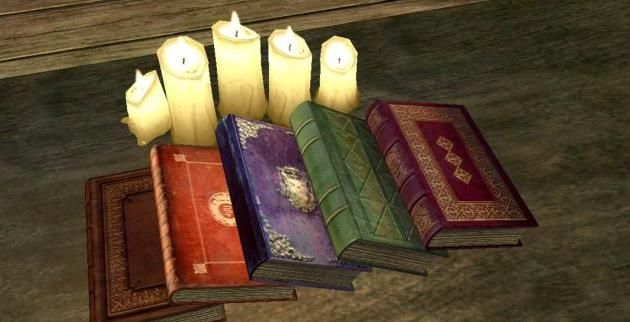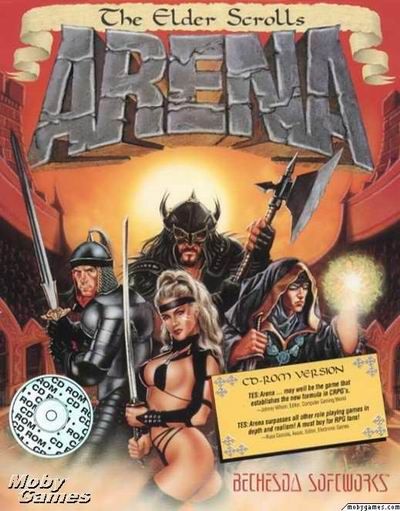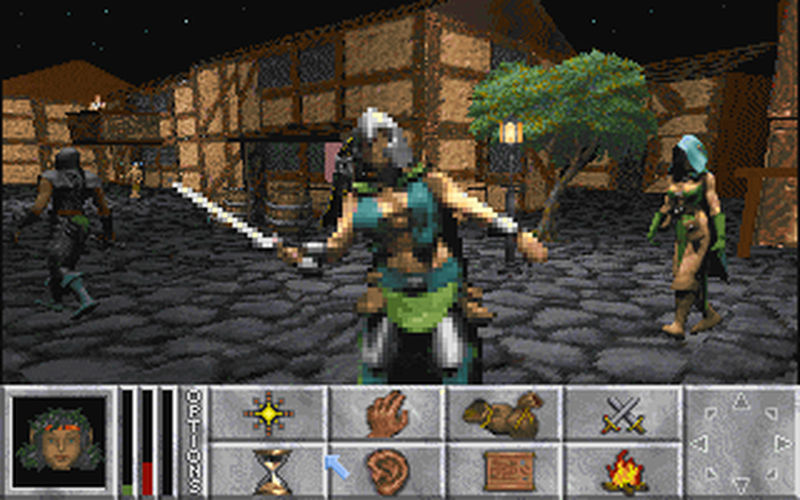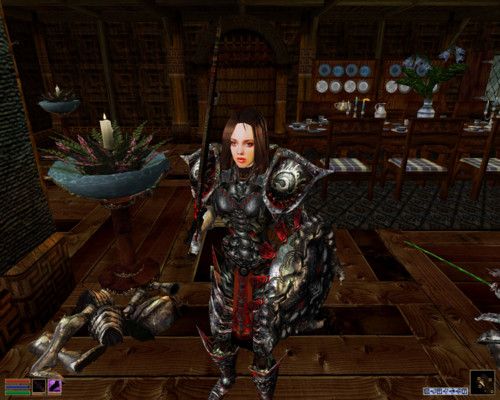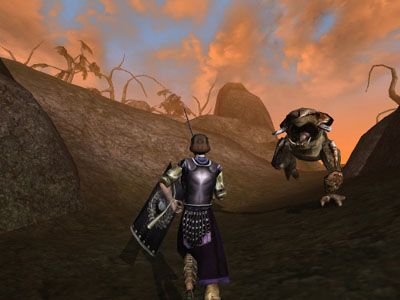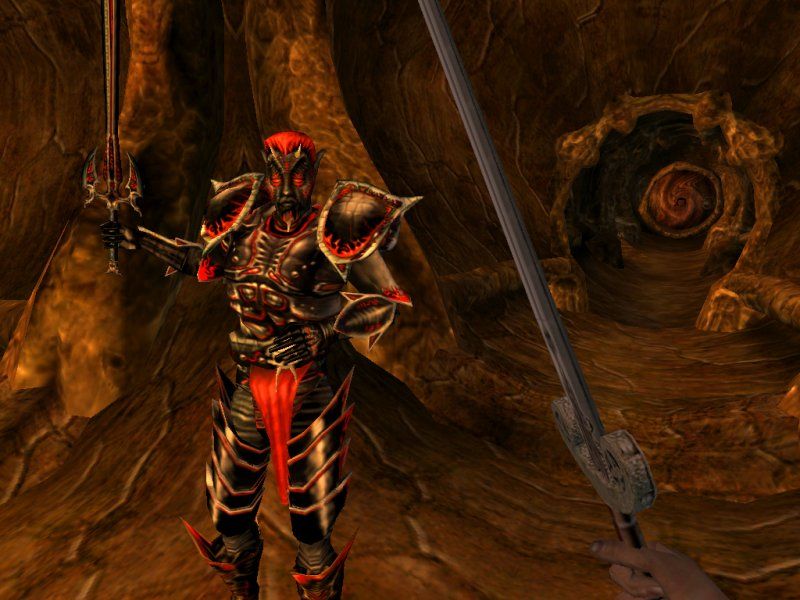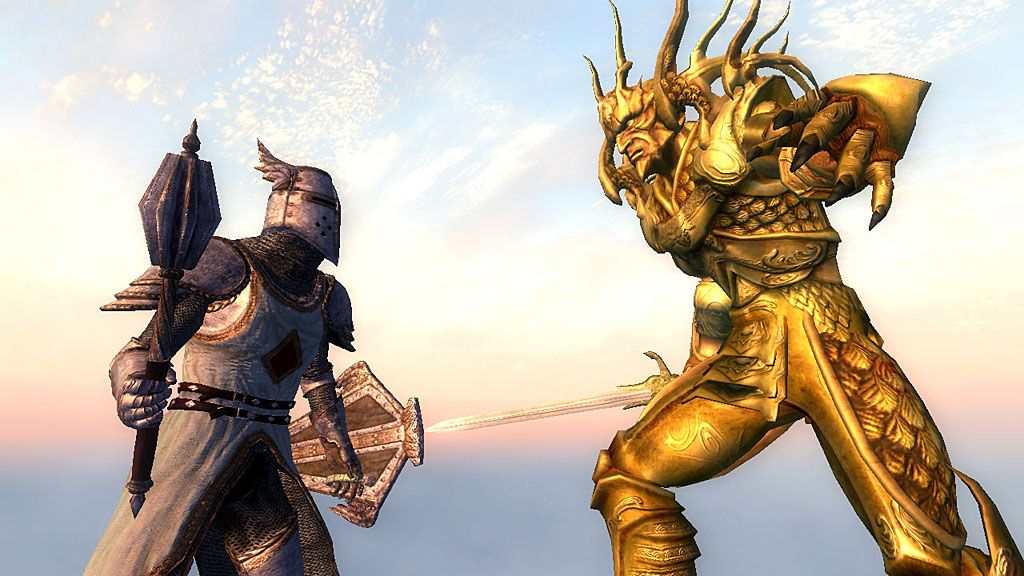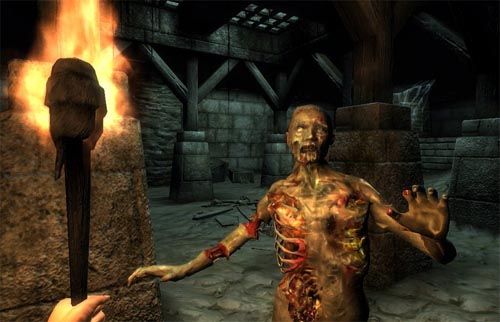The Elder Scrolls series is one of the most prized and coveted in all of gaming. With its deeply engrossing and immersive gameplay, intricate character creation, story and rich lore, it has successfully established itself as a veritable prize in games. It has amassed a following of millions around the world, and to this day is still the only gaming experience similar to it. Let’s take a closer look at this absolutely monumental franchise. This is the history of Elder Scrolls.
The Elder Scrolls: Arena: An Ambitious New Title
In 1994 the first ever Elder Scrolls game was released for DOS PC. The game allowed players to “Be who they wanted and do what they wanted”, a gameplay element that has since become one of the series’ merits. Another now glorified element that made its first appearance in the series was the open adventuring and exploration.
Players were able to travel a huge game world to discover cities, people, dungeons, and a variety of other places. Character creation allowed players to create either magically or physically inclined characters. The story of emperor Uriel Septim, who has been a core component of the series’ story since this time, first appeared.
Bethesda Softworks was a relatively new developer when the first Elder Scrolls game came out, and it allowed them to further establish themselves as the absolute powerhouse that they are today. While it was not showered with praise and commercial success the way later games in the series were, the start of an incredibly influential series is important. Furthermore, it was bigger and more ambitious than most games of that era, containing hundreds of individual areas, characters, and events.
The Elder Scrolls II: Daggerfall: A Powerful Continuity
In 1996, Bethesda released TES II: Daggerfall, the sequel to Arena. Building upon the solid RPG foundation of exploration and creation born in the first game, Daggerfall expanded the ES world substantially. Character creation and free roam returned and a host of exciting new features and mechanics appeared.
Spell creation allowed characters to design spells themselves using a combination of different effects from predetermined spells, for example a Frost-Fire spell that dealt ice and fire damage. Enchantment was also born in TES II, allowing players to bestow items and weapons with magical properties, like a sword that deals fire damage.
Since then, enchantment and spell creation have both became series staples. The game world trumped that of TES and many other games available, stretching across a staggering 487,000 kilometers. Accordingly it is twice the size of Great Britain.
This installment introduced the political aspect of the game, allowing players to join different factions and clans to eventually build a reputation. Players could transform into magical creatures like a werewolf, a vampire or a wereboar.
The original story revolves around the current emperor of high rock and a quest to put at ease the spirit of a ghost king. This story is expanded throughout the game's six different endings. Players are able to explore the world, uncovering over 15,000 different locations and three quarters of a million NPCs.
While it is commonly thought that the newer ES games are bigger than the past games, TES II has a bigger game world and more NPCs than both the 3rd and 4th games in the series combined! Daggerfall was fairly well received, even with problems of glitch-filled gameplay and monotonous exploration being cited as downfalls. While it performed better than the previous game, it still had not achieved best seller status and was still considered a rather niche title.
The Elder Scrolls III: Morrowind: From Niche Hit to Best Seller
It wasn’t until 2002 though, a full eight years after the release of the original Elder Scrolls that the series soared into mainstream success. Bethesda had amassed a huge team of creators to make the third game in the series the very best yet. The Elder Scrolls: Morrowind brought the many elements of Daggerfall together in an incredibly rich and detailed world.
Challenging the conventions of the series, the game could be played through completely in third person and was also the first ES installment to reach home consoles via the Xbox. Players were thrown into the sprawling land of Vvardenfell where your character is just being released from prison. The game improved upon its former in just about every possible way.
The skill and attribute systems were further refined. Combat was more fluid and straightforward, so much so that it handled superbly on the Xbox and PC. Political factions and guilds returned with more specific paths and bigger differences between them.
The graphics were drastically better done, with characters, enemies, places, and terrain such as water and trees all fully detailed. Characters spoke audibly for the first time. Weather effects including rain, sandstorms, snow, as well as day and night and more added to the game’s immersive atmosphere and play.
Books and tomes littered the world that detailed stories and legends which were all homage to previous games in the series and furthered Morrowind's story. Item and spell creation were enhanced and more powerful creations were possible.
A random treasure generator produced hundreds of unique items. Underwater areas allowed players to do battle with swimming monsters and search for sunken treasures. Like the previous games, a staggering amount of content was available within the game. Hundreds of plant and enemy species, locations, characters, quests, and activities permeate the game.
While the game world was summarily much smaller than in previous ES games, the size of the world and the better hardware available allowed it to be endlessly more detailed. The story was lambasted for its dire lack of urgency and utmost importance, however many credited the games overall free and undetermined feeling.
The story centers on a foreigner who will ultimately become the incarnate of a powerful god and banish a great evil from the world. TES III was arguably perfect, and it released to unanimous commercial and critical success.
The game was said to exist in a league of its own, with reviewers praising the game’s graphics, combat, exploration, story, music, and sense of immersion. Since its release, it has earned more than sixty awards, including numerous Game of the Year awards, and sold more than five million copies around the world.
The game sold so well in fact that a consummate re-release of the game, entitled The Elder Scrolls: Morrowind Game of the Year Edition was released for the PC and Xbox. This version of the game included two expansion packs for the game that became available to console owners for the first time. It also included various patches and updates, like the ability to see an opponent’s stamina. This version was even better received than the first.
The Elder Scrolls: Morrowind, is often credited as the installment that brought the series to the gaming masses, and rightfully so. Few games at the time had been praised so universally, and Morrowind had successfully reached a new precedent in console gaming. What started as a niche PC series exploded into a global best seller and firmly established Bethesda Softworks as a literal gaming force to be reckoned with.
The Elder Scrolls IV: Oblivion: The “Perfect” RPG
If TES III established the series as a triple-A RPG franchise, then TES IV set out to keep it that way. The first ES title of the new console generation, Oblivion was able to utilize the powerful Xbox 360 and PS3 hardware capabilities. With Morrowind already so close to perfection, fans dreamed about what Bethesda would do to bring their beloved series into the new generation.
What they did was keep the rock solid core that had made the game so popular and introduce a new level of technical prowess. The game featured again an expansive over world much smaller than in previous games. This time however, the sprawling landscape was rendered in marvelous high definition. Celebrity voices were recruited for various NPCs. Speaking of NPCs, all of them are fully voiced.
Character, enemy and environment detail reached a stunning high, with dramatically done facial expressions, water, wind, and weather effects. Enemies were deeply varying, including rare monsters like the unicorn. The new engine allowed dozens and dozens of characters to be viewed at once, with all of them exuding crisp and polished detail.
Dynamic timing, lighting, and shadowing were also present in the game. It featured highly enhanced artificial intelligence and NPC behavior. The gameplay was streamlined a good amount to make the story a much more substantial and important part of the game, attempting to fix the biggest issue with Morrowind. Summarily, the game was one big technical milestone, becoming not only the most impressive Elder Scrolls game, but the most impressive of any next generation game at the time of its release.
Bethesda did little to alter the award winning gameplay of the series and instead dramatically improved technical aspects of the game, like graphics, audio, and environmental dynamics. With the story nonchalance addressed, very little was received negatively about TES IV. Certain elements of Morrowind unfortunately were not able to make their appearance in Oblivion due to restrictions, like flight. Otherwise, Oblivion was called by many a perfect RPG experience.
The game dropped in 2006 to enormous critical and commercial success. Within a month of its release it had sold 2 million copies, breaking numerous records. Reviewers praised the game's graphical splendor, gameplay, soundtrack, story, and of course, immersion. Today, Oblivion stands as one of the best reviewed games of this console generation, surpassing many games released after it. It is within the top rated games period on either the PS3 or the Xbox 360 on Metacritic.
Like its former, the game was bestowed a wealth of awards and achievements, including Game of the Year awards from the Golden Joystick, G4, Shacknews, IGN, Gamespy, 1UP, Game Revolution and many more. Its tremendous success again warranted the Game of the Year re-release, including an expansion pack.
I’m certain you realize by now why The Elder Scrolls is one of the most influential and celebrated gaming franchises in history. It is a triple-A record breaking, best-selling chart topper whose most recent iterations have been chosen as the best games in their year of release. From its humble beginnings as a cult PC title to its coveted status as one of gaming’s most praised series, few games have enjoyed such unanimous success. Since its creation, developer Bethesda Softworks has become a globally recognized and revered game creator. This quote taken from a review of Oblivion sums up people’s feelings for the game pretty well:
“The Elder Scrolls games captivate in a way that only the Elder Scrolls games can”

